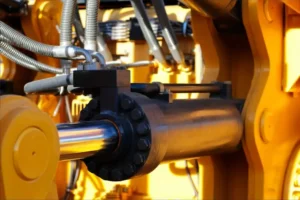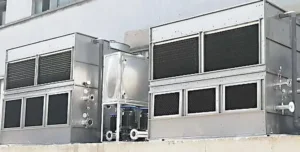
Tungku induksi semakin penting dalam peleburan seng karena efisiensi dan manfaatnya bagi lingkungan. Artikel ini menggali teknologi, keuntungan, proses operasional, dan tren masa depan menggunakan tungku induksi untuk peleburan seng.
Prinsip Teknis Pengeboran seng tungku induksi
Induksi tungku peleburan seng beroperasi pada induksi elektromagnetik dan efek termal arus listrik. Saat arus bergantian mengalir melalui koil induksi, itu menciptakan medan magnet bergantian, mendorong arus yang kuat di wadah, memanaskan dan melelehkan seng dengan cepat. Titik peleburan seng yang relatif rendah (sekitar 419,5 ° C.) memungkinkan peleburan yang efisien dalam tungku induksi.
Keuntungan peleburan seng tungku induksi
- Efisiensi tinggi dan penghematan energi: Tungku induksi panas dengan cepat dan efisien, Mengurangi konsumsi energi dan kehilangan panas, sehingga meningkatkan efisiensi peleburan.
- Ramah Lingkungan: Mereka menghasilkan gas limbah minimal dan terak, yang mudah dikelola. Langkah -langkah lingkungan tingkat lanjut, seperti filter tas, dapat lebih mengurangi emisi, sejajar dengan standar produksi hijau.
- Kemudahan operasi: Sistem kontrol otomatis dalam tungku induksi menyederhanakan operasi dan memungkinkan kontrol yang tepat, Meningkatkan efisiensi produksi dan mengurangi tenaga kerja operator.
- Kualitas logam tinggi: Pemanasan seragam mengurangi oksidasi dan pengotor, meningkatkan kemurnian dan kualitas seng.
Proses Operasional Pengisapan seng tungku induksi
Proses biasanya melibatkan:
- Persiapan: Memuat bahan baku seng (MISALNYA., ingot seng, butiran) ke dalam tungku dan menyiapkan bahan tambahan (MISALNYA., amonium klorida).
- Pemanasan awal: Secara bertahap memanaskan logam tepat di bawah titik lelehnya.
- Peleburan: Sepenuhnya melelehkan seng, dengan penyesuaian suhu dan daya tungku sesuai kebutuhan.
- Pengilangan: Menambahkan agen pemurnian (MISALNYA., amonium klorida) untuk menghilangkan kotoran dan gas.
- Pengecoran: Menuangkan seng cair ke dalam cetakan untuk menghasilkan ingot atau produk paduan seng.
Tren masa depan dalam peleburan seng tungku induksi
- Skala yang lebih besar dan efisiensi yang lebih tinggi: Seiring meningkatnya permintaan akan meningkatnya seng, tungku induksi menjadi lebih besar dan lebih efisien, Meningkatkan kapasitas produksi.
- Intelijen dan Otomatisasi: Kemajuan dalam mekatronik dan kontrol komputer mengarah ke tungku induksi yang lebih cerdas dan otomatis, menawarkan kontrol yang tepat, pemantauan jarak jauh, dan diagnostik kesalahan.
- Perlindungan lingkungan dan penghematan energi: Perkembangan di masa depan akan fokus pada mengoptimalkan desain tungku, meningkatkan efisiensi termal, dan menggunakan bahan ramah lingkungan untuk mengurangi konsumsi energi dan emisi.
- Multi-fungsionalitas: Tungku induksi akan mengembang di luar seng untuk mencium logam lain, Berkat desain modular dan konfigurasi multifungsi, melayani berbagai kebutuhan industri.
Kesimpulannya, Smelting seng tungku induksi menawarkan keuntungan yang signifikan dalam efisiensi, Dampak Lingkungan, dan kemudahan operasi, menjadikannya teknologi utama dalam industri ini. Seiring kemajuan teknologi dan aplikasi yang meluas, tungku induksi akan memainkan peran yang semakin penting dalam pembangunan berkelanjutan dari pembebaran seng.







